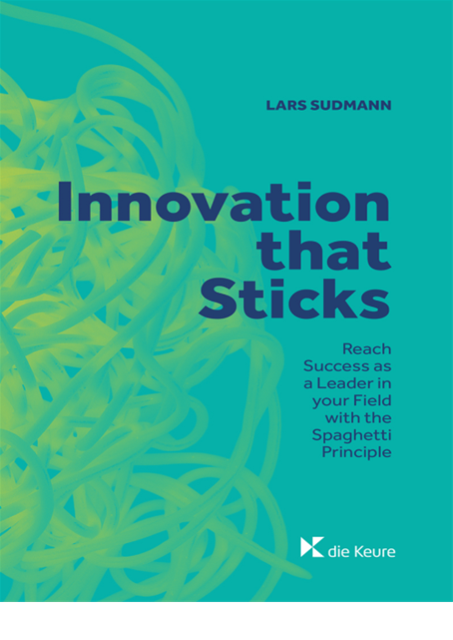Everybody is looking for innovation these days. But many leaders ask: where do I start, what should I focus on? There is a place where every leader can start to be innovative, without great investments: Your leadership style.
Leadership innovation?
If you want innovation leadership you should start with leadership innovation. With this, you can show people that it’s okay to do new things, to test out ideas and to grow and experiment. With this you lay the foundations towards innovation also in terms of products, services and the like.
Changing one’s leadership approach can be challenging. However, as John Templeton says: “It is impossible to produce superior performance unless you do something different.”
It’s not about artefacts
Being an innovative leader is not the same as installing a football table.
It is also not about bean bags, post-its, or or any of the other items that are seen as the hallmarks of cool and innovative companies these days. Not that these things are bad. But in itself they are simply artefacts and don’t change a lot.
It’s not necessarily about complex new styles of leadership, either
Then there is of course a plethora of new ways of leading and organising. One knows the key words: Agile! Scrum! Holocracy! Self-steering teams!
While a lot of these practices sure have merits, it is difficult to embed them into an existing and long-established culture without major shifts and efforts.
So what is leadership innovation about?
Here are 9 strategies that you can try out fast and in your circle of influence
1) Meeting innovation: Meetings are a key topic for every leader. But have you ever met somebody who enjoys them? Maybe your meetings can be a first. Why not have standing meetings? Or highly visual meetings that show the journey of the meeting? Or, if you really want to take it far: why not capture the viewpoint of everybody, as in this example of radical transparency. Watcht this TED talk by investor Ray Dalio on how they instantly rate others’ opinions and combine transparency and experience towards a new openness. Is this for everybody? No, but it is for sure a highly interesting approach that was transformational for him and the organisation.
2) Test out new things – live the spaghetti principle: How do you know if spaghetti are readily cooked? You throw them at a wall and see what sticks. This is what I recommend high performance and innovative organizations to do as well. To frequently test out new ideas, new ways of working, new approached. And see what sticks. That means that the organization is constantly adapting itself and continues to grow & learn.
3) Be an “I don’t know” leader: In a recent presentation by Professor Habermann I came across the term of the “I-Don’t-Know”-Leader. That is the leader who doesn’t have all of the answers but acknowledges ignorance in a complex world. The person who sets the process for exploration but not the direction. The leader who answers: “I don’t know, what do you think?” And then further develops the conversation. Trying this out for a week or two can be ery enlightening.
4) Set frameworks for exploration: In the typical exploration, people shout their ideas. Biases are quickly present. Instead, set the framework for exploration. For instance, instead of brain storming (which is in any case often nothing more than an extrovert’s shouting match) you can use brain writing: Let everybody write down their views without being influenced by others. Then, you collect everybody’s views. This will mean that meetings have some silence and reflection moments, which will be new for some people.
5) Be flexible in your leadership style: There are many different leadership styles. From directive to charismatic, from passive to active. However, in order for teams to flourish and be innovative, it is important that you take back sometimes to give others a chance to voice their views, to live what is called an empowering leadership style (see here for a good overview of styles). So switch roles and bemore of a “facilitator” rather than a “commander” at times.
6) Train together: High performance teams such as SWAT teams or sports teams do all one thing: They train together, and then they review their joint training performance. This doesn’t happen that often in a business setting. People are being sent away to a training and then come back. For innovative cultures, I recommend that teams train together how they operate: How they make decisions, conduct meetings, how they do process development, and yes, how they let new ideas come to live.
7) Search for uncommon ideas: Every week, have a different member of your team or organization present a powerful idea, a new strategy, or an innovative practice. Be careful that this doesn’t turn into an exercise that people dread. Make it into a constant flow of sharing new and uncommon ideas, even if for only five minutes a week. Let people become novelty hunters, and also force yourself to look at uncommon, random places. This avoids the phenomenon that Marie von Ebner-Eschenbach described: “We seek the truth, but we only want to find it where it pleases us.”
8) Promote self-leadership: In innovative cultures people typically do not need a lot of handholding, and self-leadership is encouraged. People feel empowered to have a vision and to bring thoughts and projects forward. The best way to do this is, as a leader, to constantly ask people: “What do you propose?” “How do you think the problem should be solved?” And so on. That nurtures leadership talent within the people you lead and enables them to come up with fresh ideas.
9) Have a set of metrics: Numbers and innovation might seem world apart. But high performance cultures do not live in fairy tale worlds – they need measurable results. I recommend all leaders who want to become more innovative to also get quantitative about strategies like the above and other. Track how many new ideas you tested, how many times you implemented something new, and so forth. Or use the metric that one executive I work with employs: talk & be with a customer at least once per week. This kind of measurement is often a new step for many leaders and it can lift your game as an innovation leader.
Go out and experiment with the thing that is in your circle of influence: your leadership style
These were nine strategies and of course there are endless more ways and possibilities to be an innovative leader. The most important thing is that you get out and try something new.
As the saying goes: “The best angle from which to approach any problem is the try-angle.”
Happy innovating.
Do you have more strategies that worked for you in your leadership work and practice as a leader? Leave them in the comments below.
*************************
Lars Sudmann is an expert on high-performance leadership in global corporations. You can contact Lars to work with you as keynote speaker at your next event or strategy advisor for management teams. You can find more articles and information as well Lars’ TEDx talks at www.lars-sudmann.com





